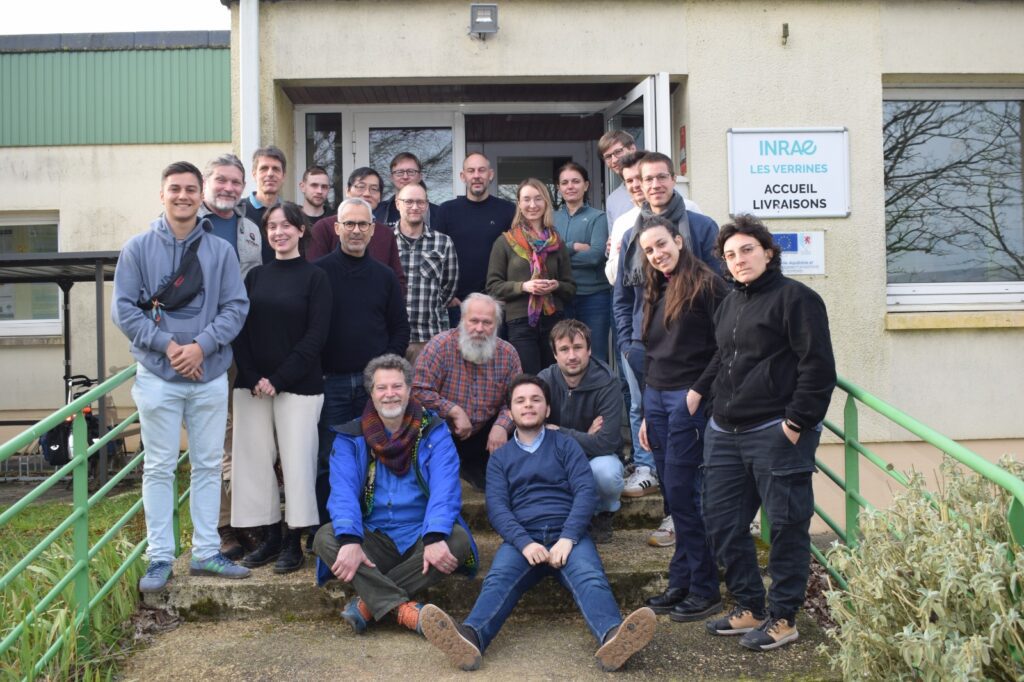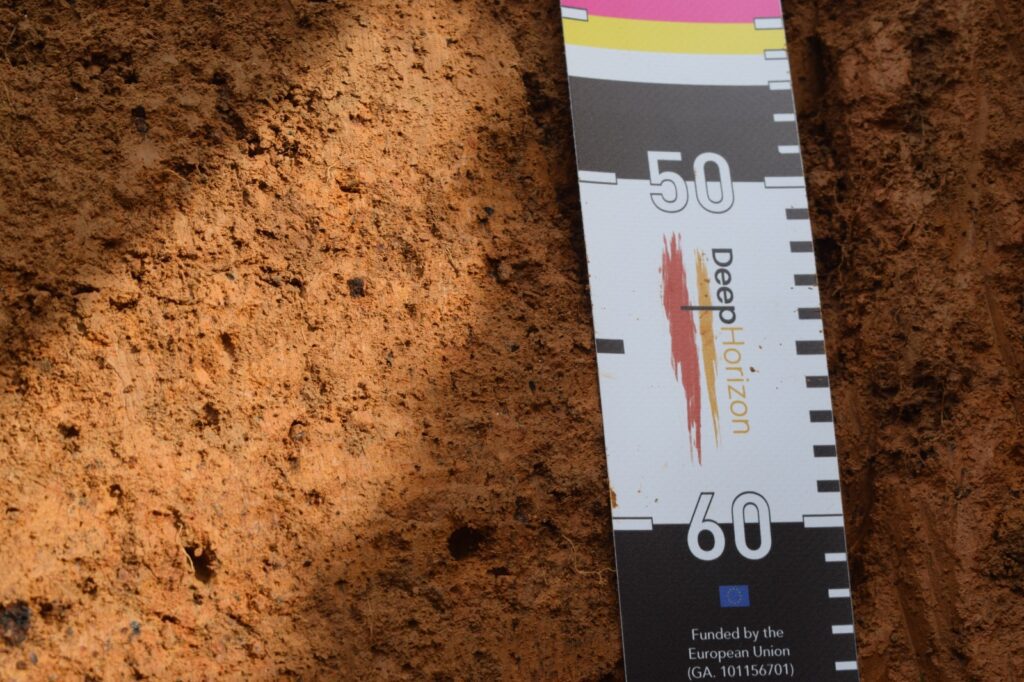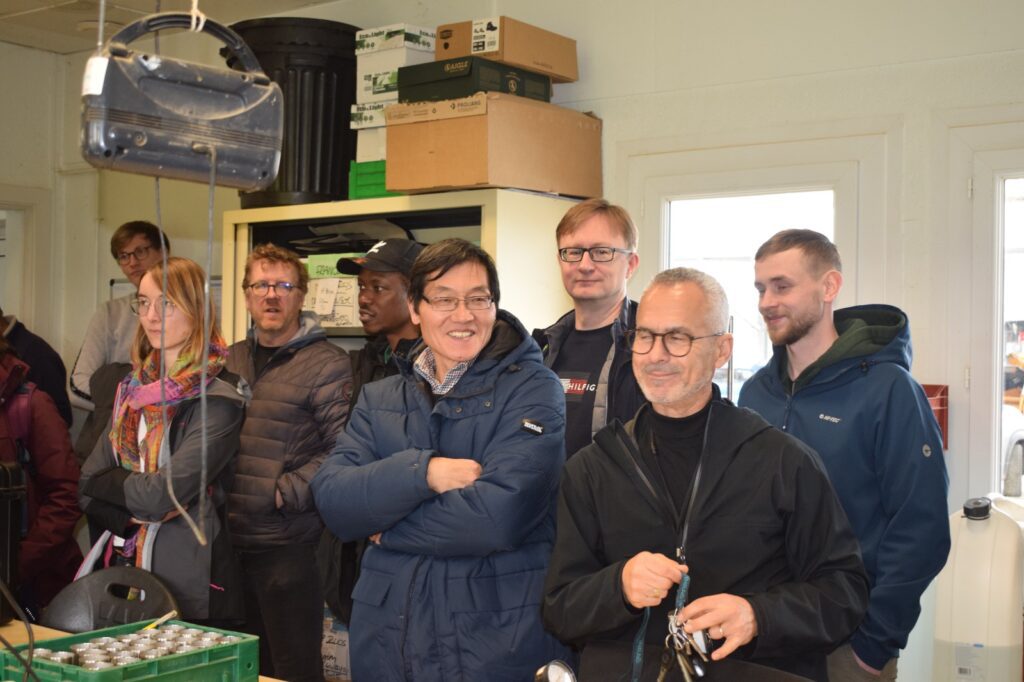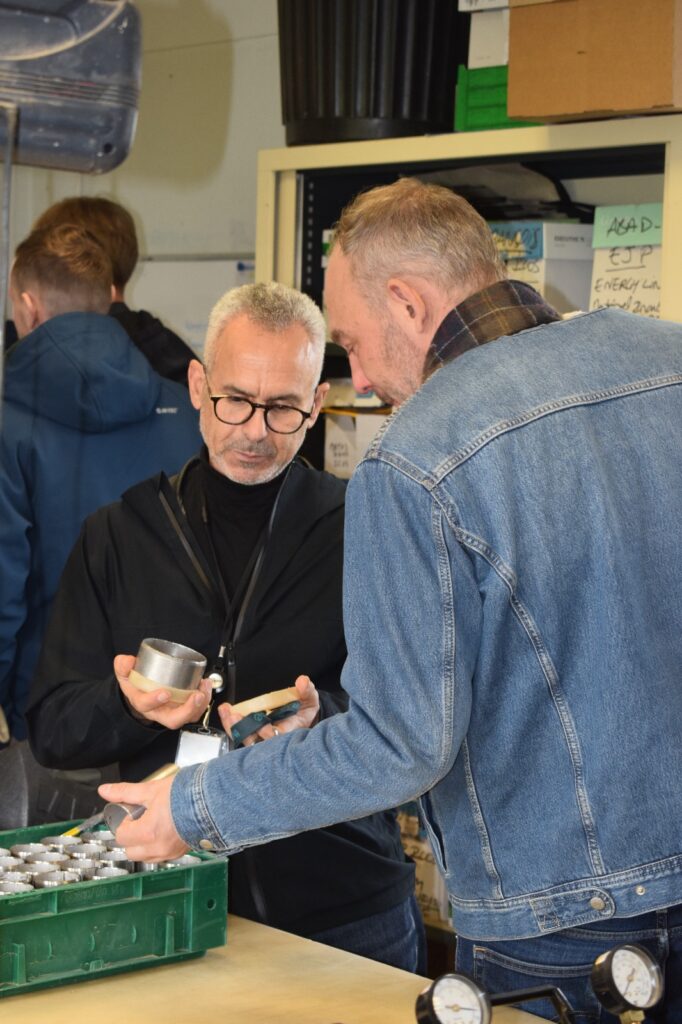Experts Set Key Agreements for Soil Sampling Under the DeepHorizon Project
Lusignan, France – In a three-day intense meeting attended remotely by top soil scientists and other environmental experts across Europe, soil sampling protocols to be considered in the next phase of DeepHorizon project have been defined at INRAE experimental station located in Lusignan. Formally known as the Soil Sampling Protocol Meeting, the event was held on the dates of 17th- 19 th February 2025 and attracted the presence of various representatives of such major institutions as the ones in our consortium.
The main goal was to standardise soil sampling procedures and data collection practices, as well as to create their consistency in various study locations. The normalisation of the procedures will enable the researchers to create similar, high-quality data that will lead to the scientific understanding of subsoil functions in the critical zone.

A Structured and Technical Programme
The meeting followed a structured agenda, blending fieldwork, technical discussions, and strategic planning:
- Day 1: Introduction to the experimental site, discussion of access agreements, site condition assessments, and sampling location mapping.
- Day 2: Implementation of trench sampling protocols, including excavation, soil profile description, and sample collection.
- Day 3: Coring sampling procedures, installation of sensors, and detailed analysis of sample storage and transport logistics.
The event also included group discussions and a focus group, allowing participants to exchange perspectives on challenges and innovations in soil research.
Key Agreements and Decisions
During the three days of the discussions in Lusignan, researchers concentrated on the matching of the methodologies and better coordination of 40 core sites. Thus, the meeting was not only a ceremony to control the current procedures, but also a scenery where changes had to be introduced in case some of the current procedures were faulty, and finally, to guarantee that the methodology of the sampling process would not alter and it would be scientifically precise.
Those goals were, of course, to be reached with several practical improvements elaborately reached upon in order to provide enhanced efficiency in data collecting, and sample maintenance. However, also there were the discussions about the means of streamlining the logistics so that the process of collecting and transporting soil samples could be quite resilient across various field conditions.
The participants were able to emphasise that they require a clear record and a standardised practice that will assist them in solidarity among the teams operating in different regions. Much attention was also paid to preservation of integrity of collected data ensuring that results are accurate, comparable, and useful in the context of wider scientific community.
In short, delivery of the Soil Sampling Protocol achieved major adjustments to field procedures in order to provide continuity between research sites:
(1) Standardisation of sampling procedures, including consensus regarding depths at which soil is sampled and better techniques to extract long cores without excessive site disturbance;
(2) As a method of enhancing traceability of samples, QR-based labelling system has been developed, with a colour-coded system of sample storage (to provide the necessary preservative conditions).
(3) Improvement of the methods of soil evaluation was also done, e.g., enhanced results in determination of biological components, introduction of high-resolution scans to record; (4) Transportation and conservation procedures were also enhanced especially in temperature-sensitive samples, and a timeframe was developed to process biologically sensitive material.
However, a large part of the conversation involved the long-term nature of monitoring, so it was indicated that sensors would be deployed to monitor the soil, including moisture levels, temperature, and greenhouse gases. Lastly, data accessibility and standardisation were agreed upon to ensure that scientific discoveries can further be readily available only that sensitive institutional information will be protected.
It is a fact that with such changes in place, DeepHorizon project will now be proceeded further in a manner that is more coordinated and structured, further enhancing its definition of high-quality execution on research and environmental sustainability.






A Promising Future for Soil Science
The general and principal success of the Soil Sampling Protocol Meeting is the step towards the future of the harmonization of soil investigation methodologies because the DeepHorizon project is devoted to the creation of the ecosystem-based answers that could positively affect the soil health and discover the significant processes in the critical zone.
The translation of access agreements to all sampling teams and their signing are on the next agenda, and the researchers will still work on data harmonization and correction of methods, guaranteeing the flawless field campaigns in spring and fall 2025.
Conclusion
The Soil Sampling Protocol Meeting in Lusignan proved to be an important move in the DeepHorizon project as top experts were summoned together to agree on ways to undertake soil investigation in a harmonised way. During the 3 days of meetings, fieldwork, and strategic planning, the gathering led to the most important refinements to processes of sampling, data collection, long-term monitoring plans, and data collection plans.
Standardisation of sampling procedures resulting in the fact that data gathered in various research locations could be compared and meet the requirements of scientific rigour may be mentioned among the most-promoted consequences. QR-based labelling and colour-coded storage such as QR-based labelling and the color-coded storage systems will help to improve sample traceability, and improved methods of soil evaluation, imaging procedures, and data availability will result in more correct and transparent research. However, the meeting was also interested in maximising the transport and conservation procedures to maintain the integrity of the samples specifically with regard to biologically sensitive material.


